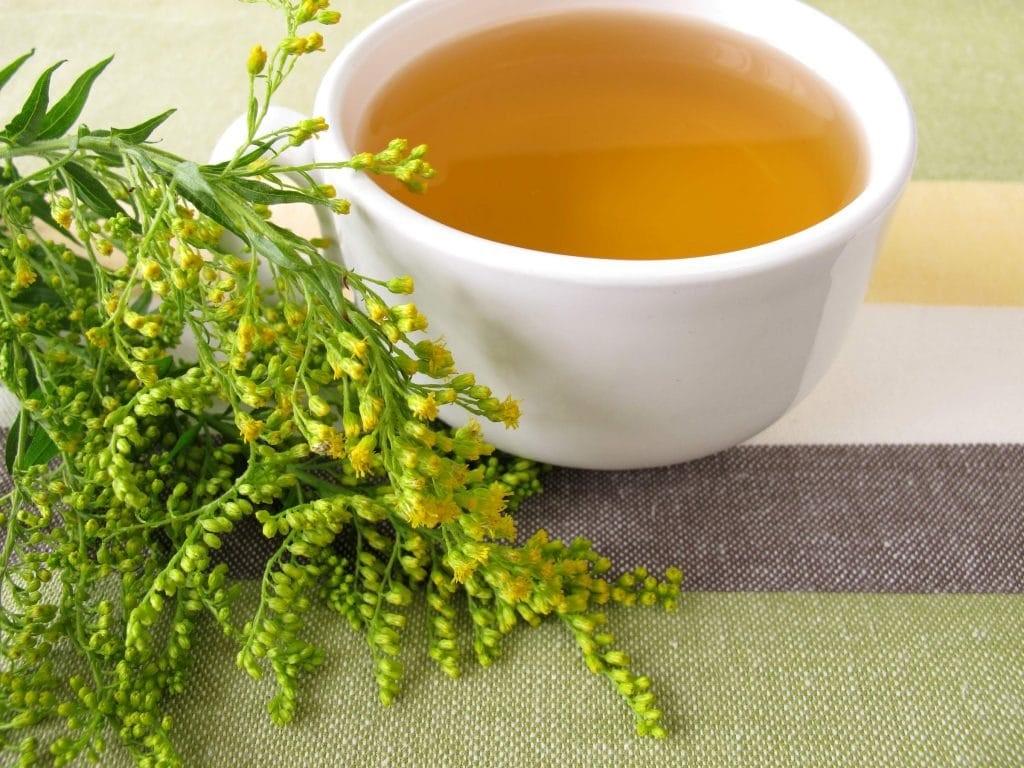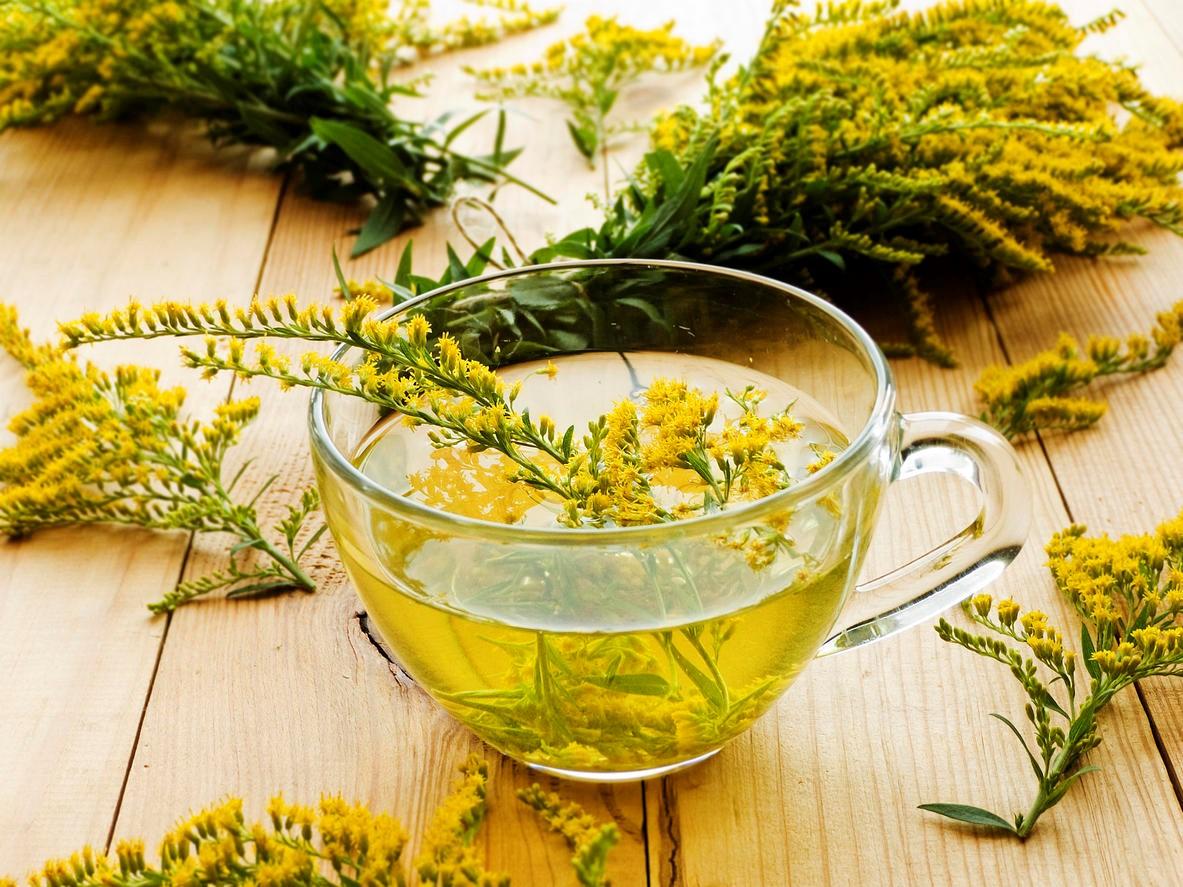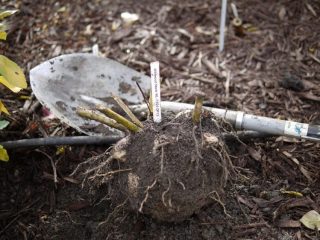Content
- 1 What does Canadian goldenrod look like?
- 2 Where does Canadian goldenrod grow?
- 3 Poisonous or not
- 4 Chemical composition
- 5 Medicinal properties of Canadian goldenrod
- 6 Traditional medicine recipes with Canadian goldenrod
- 7 Application in cosmetology
- 8 Use for weight loss
- 9 Is it possible for children
- 10 Is it possible during pregnancy?
- 11 Side effects
- 12 Contraindications for use
- 13 When to Harvest Goldenrod
- 14 How to harvest Canadian goldenrod
- 15 Conclusion
- 16 Reviews of Canadian goldenrod
Goldenrod is a crop that is often mistaken for a weed. Capturing vast territories, it grows everywhere. Moreover, the plant has a rich chemical composition. If you know how to use it correctly, a person will be able to eliminate many diseases and not have to resort to buying expensive medications.
What does Canadian goldenrod look like?
The culture has long green stems, sometimes reaching up to 1 m in height. The leaves are classically ovoid in shape and arranged alternately. At the top there are yellow flowers, they are very small and fragrant. Flowering begins in August and ends in September.

By the end of September, fruits form on the inflorescences; with their help, the crop is propagated in gardens
Where does Canadian goldenrod grow?
The plant prefers a humid but at the same time sunny climate.It is easy to find in Europe, western Russia and Asia. Canadian goldenrod grows in open meadows, near bodies of water.
Poisonous or not
Despite the warm color of the flowers, Canadian goldenrod is a poisonous plant. Its roots release a toxin into the soil, which becomes the main argument for the eviction of other crops. By the way, even microorganisms die - fungi, viruses, bacteria.
For humans, Canadian goldenrod is dangerous only if used incorrectly - before taking it, you should see a doctor.
Chemical composition
In order to study the chemical composition of Canadian goldenrod, Leningrad scientists conducted a series of studies. The following elements were identified in the leaves:
- polysaccharides;
- triterpene saponins;
- flavonols;
- hydroxycinnamic acids;
- alkaloids;
- small amount of carbohydrates.
A lot of silicon and diterpenoids were found in the root system. Based on the characteristics of the place where Canadian goldenrod grows, other substances may be present in its composition. For example, copper content in the soil can be dangerous. Botanists have discovered that the plant collects it and accumulates it. As a result, the concentration of copper inside the crop becomes higher than in the soil itself.
Medicinal properties of Canadian goldenrod
The plant has value in folk medicine. It is specially grown for medicinal purposes. Canadian goldenrod is useful because it has a diuretic and anti-inflammatory effect. It is used to treat:
- prostatitis;
- diarrhea;
- urinary system;
- skin;
- a number of heart diseases;

When used correctly, the medicine accelerates wound healing, strengthens the immune system, and removes oxides from the kidneys and bladder.
Medicines based on Canadian goldenrod are produced:
- phytolysin;
- prostanorm;
- Marelin.
You need to be able to distinguish between plants because the cultivation of Canadian goldenrod is prohibited in some countries, for example, in Belarus.
Traditional medicine recipes with Canadian goldenrod
The culture is often credited with “miraculous” properties, and some gardeners have a vague understanding of its medicinal effect. The plant does indeed have all of the above effects, but it should be used in combination with other remedies, and not separately.
For this purpose, raw materials are added to tea, decoctions and infusions are prepared:
- To prepare tea, 1 tsp is enough. substances per 1 glass of water. The herb can be poured with boiling water or cold water. In the first case, the liquid is infused for 10 minutes, in the second, wait until it boils and hold for 2 minutes. Since the concentration of the substance is small, tea is consumed for prevention, and not for the treatment of diseases.
- Canadian goldenrod for decoction – 1 tbsp. l. The substances are added to a glass of boiling water and heated in a water bath for 5-8 minutes. Then remove, leave for 3 hours and filter.
- To prepare a medicinal infusion, 1 tbsp. l. goldenrod is poured with boiling water, the glass is closed and left until the liquid cools down. After this, the solution is passed through gauze and consumed. The decoction and infusion are generally similar. The only difference is the holding time.
Application in cosmetology
The preparations described above in cosmetology do not work. However, goldenrod is extremely beneficial for the skin. On its basis, a hydrolate is prepared - a preparation that cleanses the skin and removes the fatty film.
When used frequently, Canadian goldenrod eliminates acne and ulcers. But you need to understand that the hormonal imbalance that causes their appearance will not go away. Only the external effect will be hidden.
Oily skin loses its shine, becomes dry, but does not flake. Hydrolate removes redness, makes the skin smooth and attractive.
Use for weight loss
Canadian goldenrod is not drunk for weight loss, as some people mistakenly believe. It has only a complex effect on the body - strengthens the immune system, normalizes the functioning of the genitourinary system and heart.
Is it possible for children
Goldenrod should not be brewed or infused for use by children under 14 years of age. Despite the beneficial effect, the young body cannot completely digest the grass. If allergic reactions occur, do not use immediately.
Is it possible during pregnancy?
Consumption of goldenrod, especially in the first three months of pregnancy, is prohibited and can lead to premature birth. The beneficial properties of the plant can be used in the fourth month, but only externally, for example, to improve the condition of the skin. Internal use remains dangerous at all stages of pregnancy.

The active substances contained in the culture have not been fully studied and may affect the health of the fetus
The herb can be used to rinse the mouth. A decoction or infusion helps remove unpleasant odor and eliminate inflammation in the gums. Some women develop ulcers on their lips during pregnancy. An alcohol tincture of Canadian goldenrod helps with their removal.
The medicine is also not taken during breastfeeding - toxic components pass into the milk, which can be dangerous for the baby. Even a small dose can lead to an allergic reaction, especially if the child is predisposed to it. The consequences are extremely unpleasant.
Side effects
Even a properly prepared product can cause side effects. Those who have taken Canadian goldenrod sometimes experience nausea, redness of the skin, itching, diarrhea, and various allergic reactions.
Contraindications for use
In the cosmetic field, goldenrod has no contraindications. The only thing is that an allergic reaction may develop. Internal use of the plant has a number of limitations. Tea, decoctions and infusions containing it are prohibited for the following diseases and conditions:
- hepato-cerebral dystrophy;
- protein diet;
- pregnancy;
- under 14 years of age;
- Hodgkin's lymphoma;
- breastfeeding;
- liver diseases;
- xanthinuria;
- Fanconi syndrome.
Contraindications do not apply to honey, since it contains no toxic substances.
When to Harvest Goldenrod
It is mainly the leaves and flowers that have medicinal value.Therefore, the collection begins at the beginning of flowering, that is, in August.
How to harvest Canadian goldenrod
The top part of the plant’s stem needs to be cut off – 20 cm. The leaves and inflorescences are torn off by hand and then laid out in the shade to dry.

Canadian goldenrod can be stored outdoors under a canopy or in a cool room.
The medicine retains its composition and medicinal properties for three years.
Conclusion
Canadian goldenrod is cultivated in all countries where it is not prohibited by law. In Russia, growing the plant is not contraindicated. However, do not forget to consult a doctor. Some people are simply not inclined to take medicine - due to allergies, age, or health conditions.
Reviews of Canadian goldenrod











